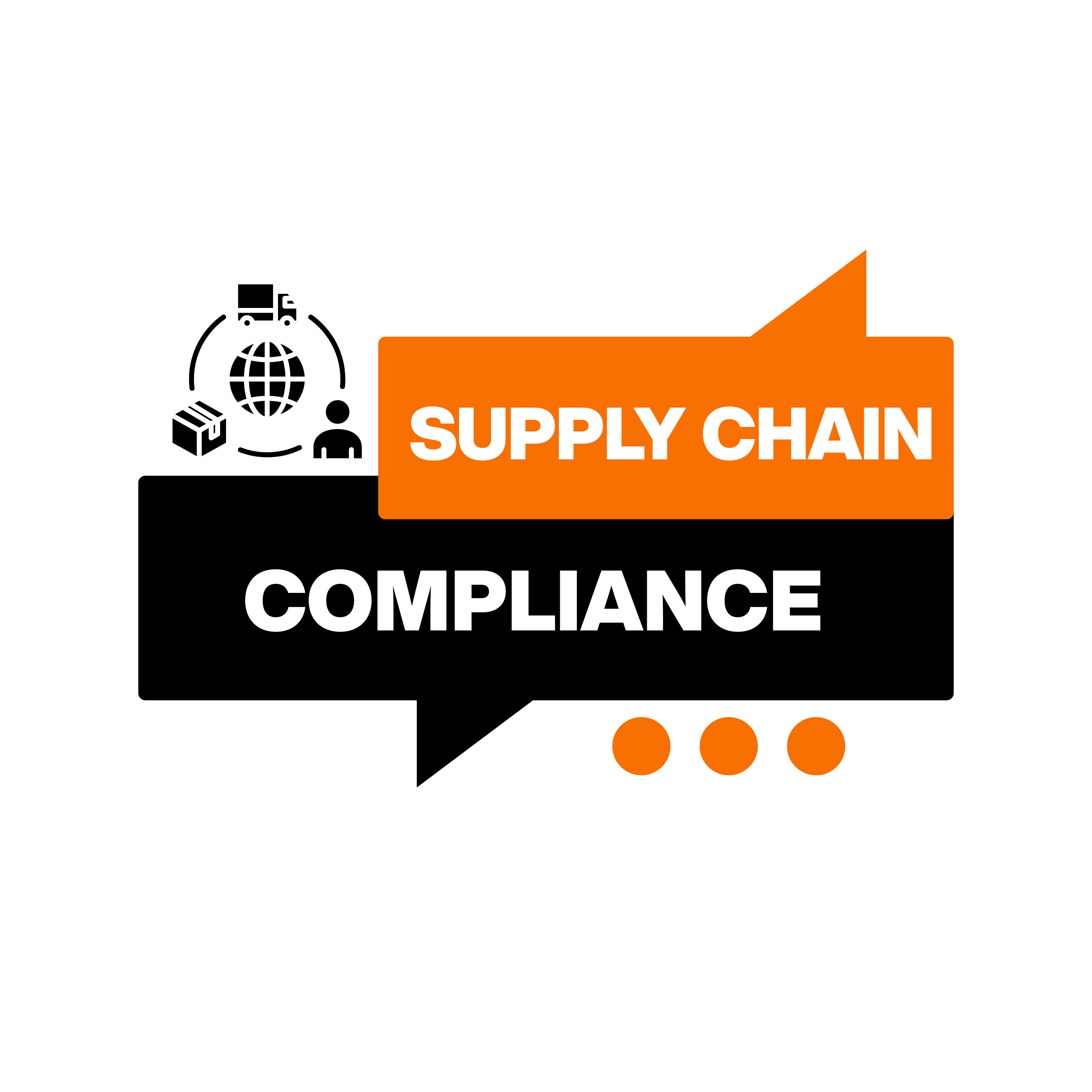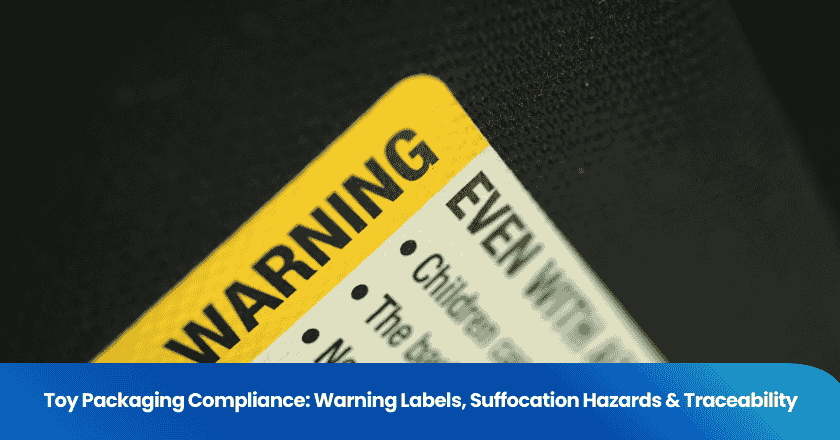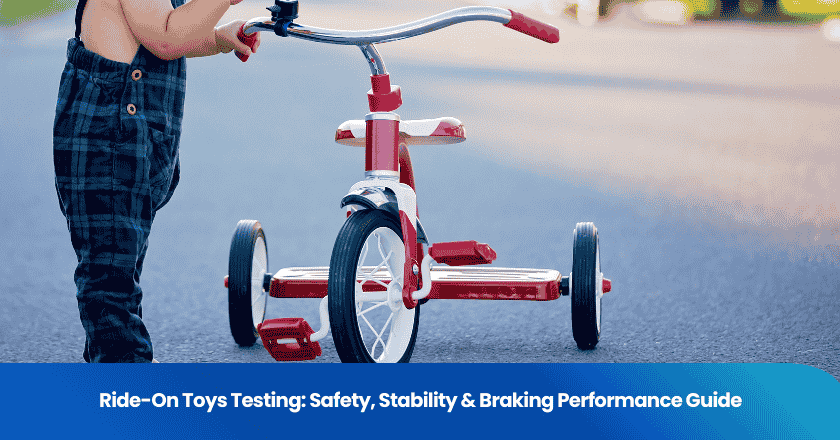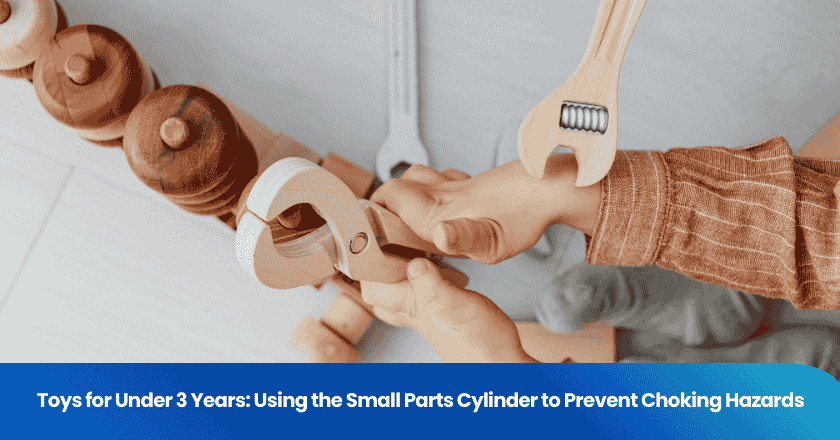
A quality control company helps you ensure that your products meet strict standards before they reach customers. You rely on quality control to catch nonconformance, such as design errors or material defects, which can increase costs and lead to customer dissatisfaction. Without a quality control company, you risk using defective raw materials, which can cause faulty products and even force product recalls. Quality control not only protects safety and functionality but also reduces complaints.
You might notice customer complaints cluster around certain lot numbers or dates. This signals deeper quality issues that a quality control company can identify and resolve.
A quality control company provides you with the oversight you need to maintain trust and deliver safe, reliable products.
Key Takeaways
- Quality control companies help ensure products meet safety and quality standards, preventing defects before they reach customers.
- Regular inspections and testing at every production stage catch issues early, saving time and reducing costs associated with recalls.
- Compliance checks by quality control experts protect businesses from legal risks and ensure adherence to industry regulations.
- Accurate reporting from quality control processes provides valuable insights, helping businesses make informed decisions and improve product quality.
- Investing in quality control leads to higher customer satisfaction, trust, and a stronger brand reputation in the market.
Quality Control Company Roles
A quality control company plays a vital role in helping you maintain product excellence and meet industry requirements. You benefit from their expertise in inspections, compliance checks, and detailed reporting. These services ensure your products align with strict standards and specifications, reducing risks and building trust with your customers.
Inspection Services
You rely on inspection services to verify that every stage of your production process meets established standards. A quality control inspector examines raw materials, components, and finished products to ensure they match your specifications. This process helps you catch defects early and prevent costly mistakes.
You can expect a quality control company to:
- Receive and inspect raw material for compliance with your requirements.
- Test products using various quality control methods to confirm they meet technical specifications.
- Record and report testing metrics and results for traceability.
- Provide feedback to your team and quality auditors, supporting continuous improvement.
- Stay updated with the latest standards and protocols relevant to your industry.
- Discard products or batches that fail to meet quality expectations, protecting your reputation.
A quality control inspector adapts inspection services to your industry. For example, in electronics, inspectors use AI-driven systems to detect defects in semiconductors, ensuring high precision. In food and beverage, inspectors employ AI to identify contaminants and maintain product consistency. In textiles, inspectors leverage advanced technology to spot fabric defects quickly and minimize waste.
| Aspect | Quality Control SOP | Quality Assurance SOP |
|---|---|---|
| Definition | Step-by-step guide for inspecting, verifying, and validating product quality. | Structured document for ensuring quality standards are maintained across processes. |
| Primary Focus | Detects and corrects defects during or after production. | Prevents defects by standardizing processes and responsibilities. |
| Approach | Risk-based, centered on critical control points and measurable outcomes. | Process-based, focused on mapping workflows and ensuring system-wide quality consistency. |
| Purpose | Ensure each unit meets technical and regulatory standards. | Establish systemic quality through traceable and standardized practices. |
| Scope | Inspection points, testing methods, acceptance criteria, and corrective actions. | Personnel roles, process stages, audits, documentation, and change control. |
| Who Needs It | Manufacturers, labs, healthcare, food processors, and construction firms. | Pharma, biotech, aerospace, healthcare, automotive, and other regulated industries. |
| When to Use | New product launch, scaling operations, increased defects, and regulatory compliance. | New processes, automation, multi-site standardization, and regulatory audits. |
| Key Benefits | Consistency, compliance, traceability, reduced errors, cost savings, and higher satisfaction. | Risk reduction, operational efficiency, accountability, faster training, and continuous improvement. |
| Compliance Role | Ensures final outputs align with internal and external quality requirements. | Embeds quality into every process to meet compliance from start to finish. |
| Training Function | Helps train staff on inspection procedures and acceptance limits. | Facilitates onboarding and performance consistency across roles. |
| Improvement Driver | Identifies and corrects deviations at inspection points. | Enables audit-based revisions and long-term process optimization. |
You see that inspection services are not just about checking products. They involve a structured approach that covers every detail, from raw materials to finished goods, ensuring you meet all specifications and requirements.
Compliance Checks
You need to ensure your products and processes comply with both local and international standards. A quality control company conducts thorough compliance checks to protect your business from legal and financial risks. These checks cover a wide range of requirements, from financial stability to regulatory certifications.
| Compliance Check Type | Description |
|---|---|
| Financial Viability Assessment | Evaluates the financial stability of suppliers to prevent risks associated with insolvency. |
| Insurance and Liability Coverage Verification | Ensures suppliers have appropriate insurance to mitigate operational risks. |
| Quality Management System (QMS) Certifications | Verifies that suppliers have a structured approach to maintaining quality through recognized standards. |
| Product Quality Control Processes | Assesses specific processes to ensure products meet quality specifications before shipment. |
| Industry-Specific Regulatory Compliance | Checks compliance with regulations specific to the supplier's industry. |
| Legal Compliance Verification | Identifies potential legal issues that could disrupt operations or harm reputation. |
You benefit from a quality control inspector’s expertise in international regulations. They help you implement a robust quality management system, maintain document control, and prepare for regulatory audits. You also receive guidance on operating in validated environments and establishing clear policies and procedures. These steps ensure you meet all requirements and maintain compliance with global standards such as ISO 9001.
Tip: You should regularly review your compliance status to avoid costly disruptions and maintain your reputation in the market.
Reporting
You depend on accurate and timely reporting to make informed decisions about your products and processes. A quality control company provides detailed inspection reports at every stage, from receiving raw materials to final product release. These reports document whether your goods meet specifications and highlight any deviations from quality standards.
| Stage of Inspection | Description |
|---|---|
| Receiving Raw Materials or Components | QC reports document whether supplied goods meet required specifications before production. |
| During Production | In-process checks detect deviations early, confirming processes run correctly and identifying issues. |
| Final Product/Service Inspection | Final inspections ensure finished goods meet quality standards before reaching the market. |
| Handling Customer Complaints or Returns | QC reports provide data to understand defects and implement corrective actions. |
| Supplier Evaluation | Reports offer evidence of quality consistency and adherence to agreements. |
| Regulatory Compliance | QC reports serve as essential documentation for audits and legal requirements in regulated industries. |
A comprehensive inspection report includes:
- Inspection details such as report ID, date, location, and inspector’s name.
- Product or process details, including item name, SKU, and batch or lot number.
- Inspection checklist and criteria used for assessment.
- Findings and observations on compliance with specifications.
- Non-conformance details and severity.
- Visual evidence like photographs or diagrams.
- Recommended corrective or preventive actions.
- Signatures and approvals to confirm completion and acceptance.
You also gain from advanced technologies in reporting. Automation and data analysis tools streamline the reporting process, making it easier for you to identify trends and take corrective action. Predictive maintenance and supply chain transparency tools help you address potential issues before they escalate. AI and machine learning further enhance your ability to analyze large volumes of quality data, supporting continuous improvement.
A quality control inspector’s training and certifications ensure you receive reliable and accurate reports. Most inspectors start with a high school diploma and gain experience through on-the-job training. Certifications such as Certified Quality Inspector (CQI), Certified Calibration Technician (CCT), and Six Sigma Yellow Belt demonstrate proficiency in quality control methods and standards.
You can trust that a quality control company’s reporting process gives you the information you need to meet all requirements, maintain high quality standards, and satisfy your customers.
Quality Control Process
The quality control process forms the backbone of reliable manufacturing. You use this process to ensure that every product meets your standards and satisfies your customers. By following a structured approach, you can identify issues early, reduce waste, and drive continuous improvement across your operations.
On-Site Checks
You start the quality control process with on-site checks. These inspections take place directly on the factory floor, where you can observe production in real time. On-site checks help you spot defects and inconsistencies before products leave the facility. This step is essential for maintaining high standards and preventing costly recalls.
- You conduct initial production checks (IPCs) on the first finished pieces. This allows you to confirm that your team follows specifications from the very beginning.
- You inspect construction, appearance, functionality, and performance. By doing so, you catch potential problems early and avoid mass-producing defective items.
- You use on-site checks to verify that your processes align with customer requirements and regulatory standards.
Tip: Early detection through on-site checks saves time and resources. You can address issues before they escalate, ensuring a smoother production flow.
Testing Methods
Testing products is a critical part of the manufacturing quality control process. You select testing methods based on your product type, customer expectations, and industry regulations. The right approach ensures your products are safe, reliable, and ready for the market.
| Testing Method | Description |
|---|---|
| Inspection | You examine products for defects or deviations, using manual or automated tools. |
| Functional Testing | You check if the product works as intended under normal conditions. |
| Usability Testing | You assess how easy and user-friendly the product is for your customers. |
| Performance Testing | You measure how well the product performs under different scenarios. |
| Durability Testing | You evaluate the product’s lifespan and resistance to wear and tear. |
You often combine several testing methods to get a complete picture of product quality. For example, when testing products like consumer electronics, you might use functional testing to ensure devices operate correctly and durability testing to confirm they withstand daily use. You align your testing approach with your business goals and target audience, always keeping compliance in mind. This strategy reduces risk and increases your chances of successful market entry.
Testing products also supports continuous improvement. By analyzing test results, you identify trends and areas for enhancement. You can then adjust your processes, materials, or designs to achieve better outcomes in future production runs.
Sampling
You rarely have the time or resources to inspect every single item in a large batch. Instead, you use statistical sampling to improve efficiency and accuracy in your quality control process. Sampling allows you to draw reliable conclusions about the entire lot by examining a representative subset.
| Sampling Method | Description |
|---|---|
| Simple random sampling | You give each item an equal chance of selection, which minimizes bias. |
| Stratified sampling | You divide the lot into subgroups and target specific traits for inspection. |
| Cluster sampling | You inspect selected clusters, reducing the need for comprehensive individual checks. |
| Acceptance sampling | You use predefined criteria to decide if a batch meets your standards, streamlining inspections. |
You choose the sampling method that best fits your production scale and product type. For example, in a textile factory, you might use stratified sampling to focus on different fabric types. In electronics, acceptance sampling helps you quickly determine if a shipment meets your requirements.
Sampling not only speeds up inspections but also supports continuous improvement. By tracking defect rates and patterns in your samples, you can pinpoint root causes and implement corrective actions. This approach leads to fewer defects, higher efficiency, and greater customer satisfaction.
Note: Many leading manufacturers have used these quality control strategies to achieve remarkable results. For instance, companies that adopted structured quality control and continuous improvement programs have seen dramatic reductions in defects and significant cost savings.
You can see that a robust quality control process—built on on-site checks, effective testing products, and smart sampling—forms the foundation for consistent quality and ongoing improvement in manufacturing.
Importance of Manufacturing Quality Control
Preventing Defects
You understand the importance of manufacturing quality control when you see how it helps you prevent defective products from reaching your customers. By setting up a well-defined production plan, you outline each step and identify weak points where defects may occur. You place quality control checkpoints at critical stages, which allows you to catch issues early and stop them from spreading. Regular maintenance and calibration of your machinery keep equipment running smoothly, reducing the risk of defective items. You also invest in training your workforce, making sure everyone knows how to avoid mistakes that lead to defects.
- A proactive approach to quality control, such as Kaizen-driven systems, helps you eliminate defects at the source.
- You use data, automation, and AI to create self-improving processes that focus on defect prevention.
- You see that world-class companies do not just fix problems—they stop them before they start.
Ensuring Safety
You protect your customers and your team by making safety a top priority. Quality control practices directly improve safety outcomes across industries, including manufacturing and healthcare. When you follow strict quality control protocols, you reduce the risk of accidents and injuries.
| Evidence Type | Description |
|---|---|
| Improvement in Safety Culture | You see better performance on safety measures, such as fewer workplace incidents. |
| Patient Experience | Customers and clients report higher satisfaction with safe, reliable products. |
| Workforce Engagement | Your team feels more engaged and resilient when safety is part of your culture. |
| Culture of Safety | Teamwork and a strong safety culture lead to better outcomes for everyone. |
You build trust by showing your commitment to safety through consistent quality control.
Protecting Reputation
You know that your brand reputation depends on delivering quality every time. Quality control helps you protect your brand reputation by catching defects early and ensuring only the best products reach the market. You conduct regular inspections and testing at every stage of production. You combine automated quality control systems with human oversight to maintain high standards.
- You avoid the damage that defective products and recalls can cause to your brand reputation.
- You show your customers that you value quality and reliability.
- You strengthen your position in the market by making quality control a core part of your operations.
- You use quality control to build long-term trust and loyalty, which are essential for a strong brand reputation.
- You recognize that defect prevention is not just about avoiding problems—it is about protecting your brand reputation for the future.
Customer Impact
Satisfaction
You want your customers to feel confident every time they use your products. Quality control plays a direct role in shaping customer satisfaction. When you implement strong quality control, you deliver products that meet expectations for safety, reliability, and performance. Customers notice when products work as promised and when they do not encounter defects or malfunctions.
- Quality control ensures product reliability, safety, and compliance with standards.
- Effective quality control reduces defects and minimizes recalls.
- Building consumer trust is essential for maintaining high customer satisfaction.
You see the impact most clearly in industries like electronics. When you maintain robust quality control, your products become safer and more reliable. Customers experience fewer issues, which leads to higher satisfaction ratings. Defective products can cause frustration and even safety risks, damaging your reputation and lowering customer satisfaction. By focusing on quality control, you prevent these problems and keep your customers happy.
Consistent quality control helps you avoid costly recalls and negative reviews, both of which can harm customer satisfaction and loyalty.
Trust
You build trust with your customers by consistently delivering quality. When you use rigorous quality control, you show that you value the customer experience. Customers return to brands they trust, and trust grows when products meet expectations every time.
- Consistent quality control ensures products meet customer expectations, which is crucial for building trust.
- Brands that implement rigorous testing can prevent issues like faulty products, which can damage consumer confidence.
- A reliable product indicates that a brand values customer experience, fostering long-term loyalty.
You know that trust does not happen overnight. Each positive experience adds to your reputation. When customers see that you prioritize quality control, they feel secure in their purchases. This trust leads to repeat business and positive word-of-mouth, both of which drive long-term success.
Remember, customer trust is the foundation of lasting relationships and high customer satisfaction.
Quality Control vs. Quality Assurance
Key Differences
You often hear the terms quality control and quality assurance used together, but they serve different purposes in your operations. Quality assurance focuses on preventing problems before they happen. You use quality assurance to design processes, set standards, and ensure your team follows best practices from the start. In contrast, quality control helps you find and fix defects after production begins. You rely on quality control to inspect finished products and confirm they meet your requirements.
Here is a table to help you see the main differences:
| Aspect | Quality Assurance (QA) | Quality Control (QC) |
|---|---|---|
| Proactive vs. Reactive | Proactive; prevents defects | Reactive; identifies defects |
| Focus | Process-oriented | Product-oriented |
| System vs. Parts | Involves systems and standards | Measures parts and outputs |
| Creation vs. Verification | Defines standards for production | Verifies finished products |
| Responsibility | Involves the entire team | Specific personnel handle testing |
| Timing | Before work begins | During and after production |
You use quality assurance to build a strong foundation. You use quality control to ensure the final product meets expectations. Both are essential for delivering safe, reliable products.
Common Misconceptions
Many people confuse quality control with quality assurance. You might think they are the same, but this misunderstanding can hurt your business. Some believe quality assurance is just paperwork or that it only benefits external customers. Others see quality management systems as costly or unnecessary.
Common misconceptions include:
- Thinking quality initiatives do not provide real value.
- Believing quality is only for customers, not for your internal processes.
- Assuming quality management systems only add paperwork and cost.
If you do not understand the difference, you risk creating ineffective systems. This can lead to higher costs, regulatory issues, and unhappy customers. You need both quality assurance and quality control to protect your reputation and keep your operations running smoothly.
You rely on a quality control company to safeguard your business and build customer trust. Neglecting quality control exposes you to risks such as product recalls, increased costs, and loss of customers. When you invest in professional services, you gain:
- Operational efficiency and improved market position
- Consistent product quality and reduced defect rates
- Higher customer satisfaction and loyalty
- Cost savings from less waste and rework
- Enhanced brand reputation and regulatory compliance
You measure the value by tracking benefits, subtracting costs, and calculating ROI. Choosing quality control services secures long-term success and protects your reputation.
FAQ
What does a quality control company inspect?
You receive inspections at every stage—raw materials, in-process production, and finished goods. Inspectors check for defects, compliance with standards, and overall product quality. This process helps you catch issues early and maintain consistent results.
How often should you schedule quality control inspections?
You should schedule inspections regularly, especially at key production stages. Many companies choose pre-production, during production, and pre-shipment checks. Frequent inspections help you identify problems quickly and reduce the risk of defects reaching customers.
Why is sampling important in quality control?
Sampling lets you evaluate a batch without checking every item. You save time and resources while still getting reliable data. This method helps you spot trends, identify defects, and make informed decisions about product quality.
Can quality control help you meet regulatory requirements?
Yes. Quality control ensures your products comply with industry regulations and safety standards. You avoid legal issues, pass audits, and maintain your reputation by following strict quality control protocols.
What qualifications do quality control inspectors need?
Quality control inspectors usually have technical training and industry certifications. You benefit from their expertise in inspection methods, standards, and reporting. Their skills ensure accurate assessments and reliable results.
Grow your business with TradeAider Service
Click the button below to directly enter the TradeAider Service System. The simple steps from booking and payment to receiving reports are easy to operate.




